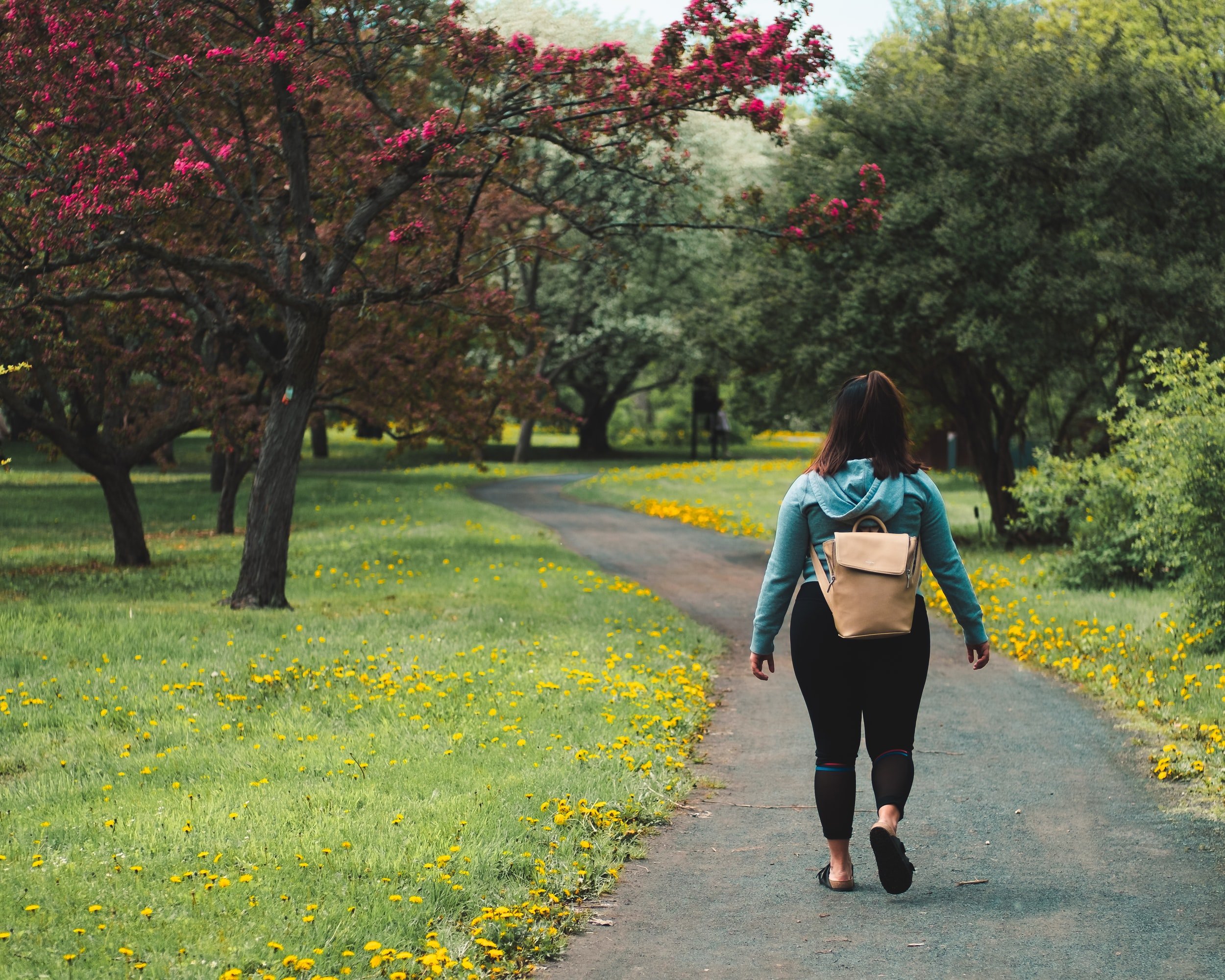Updated: 3/18/22
Starting up a walking program can have numerous benefits for overall health and well-being for all ages. It can help you lose weight, strengthen your bones and muscles, improve balance and coordination and lower the risk of diabetes, stroke and heart disease.
Consider these 7 walking tips before you get started.
1. WARMING UP AND COOLING DOWN Despite the fact that walking is a low-impact activity, prevent muscle strains or other injuries by properly warming up and cooling down.
Warming up helps increase blood circulation, delivering oxygen and nutrients to the tissues. This helps make your muscles more pliable and reactive, readying the body for exercise. On the other hand, cooling down helps decrease the buildup of lactic acid, which helps prevent aching pains and soreness.
2. PAY ATTENTION TO THE WEATHER If you aren’t prepared, rain, cold and intense heat in the summer can all make for uncomfortable walking conditions. When it’s cold outside, layer your clothing so you can remove them if you start to get too warm. In warmer temperatures, bring plenty of water to stay hydrated. Don’t forget sunscreen, even on cloudy days.
Also, it’s important to recognize when the conditions aren’t safe for walking outdoors. In the winter, sidewalks can become slippery, frigid temperatures can cause numbness and make your muscles stiff and summer’s extreme heat can make heat stroke more likely. On these days, opt for a treadmill, or walking indoors at the mall or another low-impact activity like swimming or cycling until it’s safe to head outdoors again. Similarly, air quality indexes should also be checked before you head outside to protect your respiratory system and overall health.
3. GEAR UP Moisture-wicking sportswear with pockets to hold personal items, a hat and sunglasses are all pieces of equipment that can help make your workout more comfortable. Rain slickers, gloves and good socks are helpful too. But when you begin walking, the most important piece of equipment you can invest in is your footwear.
Consider purchasing a dedicated walking shoe instead of any ordinary shoe. A walking shoe will generally have a lower heel than a running shoe but will also be supportive during the activity and provide good traction to prevent falls on loose or wet surfaces. Your local running shoe store will be able to help fit you with the proper shoe.
4. WALKING SURFACES Hard walking surfaces like the sidewalk or road can be harsher on your joints and muscles, especially for seniors or those that have problems with hips, knees, ankles or feet. Softer walking surfaces like smooth dirt trails or grass will be easier on your joints.
The treadmill is also an excellent choice that’s softer than walking on the road and offers a safe, controlled environment to exercise.
5. PAY ATTENTION TO YOUR BODY During exercise and in the days that follow a workout, listen to your body. Pay attention for any changes that are out of the ordinary. An aching back, sore knees or a cold you can’t shake are all things you shouldn’t try to push through. Swollen feet could be a sign of a circulatory problem and difficulty breathing could mean you need to have your allergies and lungs tested for an underlying condition. The key to maintaining your health and continuing a walking program safely is getting these things checked out early.
6. WALKING THROUGHOUT THE DAY In general, it is recommended that adults over the age of 65 complete a minimum of 150 minutes of moderate-intensity exercise per week. While 30 minutes of exercise a few times per week gets the job done, it’s perfectly fine to work your way up to a goal of 60 minutes per day.
This might seem like a tall task if you are out of shape or not used to a workout routine, but it’s actually easier than you think. Instead of going out every morning for a 60-minute walk, break it up into several different sessions throughout the day. A 20-minute walk in the morning, another in the afternoon, and perhaps a third in the evening might be easier to manage than trying to get the entire workout done at once. Even parking your car further to get your steps in can help.
7. MAKE SAFETY A PRIORITY As with anything else, your personal safety should be your primary concern. It’s a good idea to carry a smartphone in case you need to call for help, carry a flashlight or wear light colored/reflective clothing if you plan to walk at night and keep a watchful eye on the ground in front of you for potential hazards. And if you experience any pain while you’re exercising, it’s wise to stop and take a break.
Remember to set realistic goals when you begin and be honest with yourself when you have an injury. Increase your activity slowly and always consult your doctor or other healthcare professional if you have any concerns.


